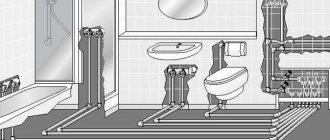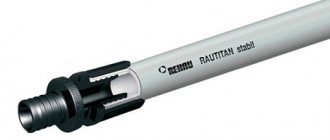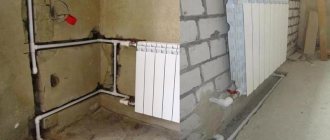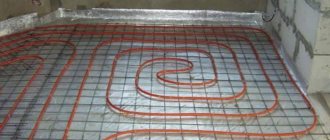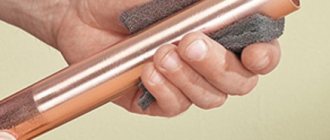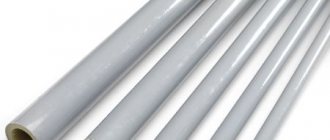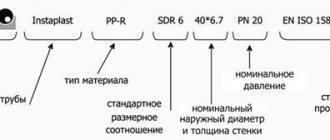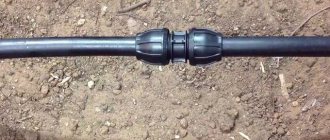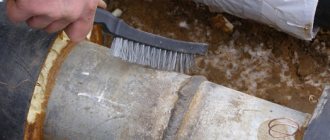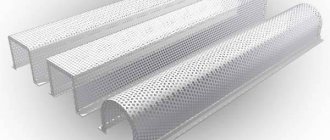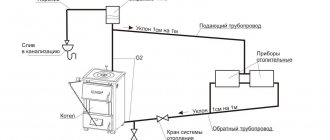Plumbing in the house
Distributing water supply in a house from a well or well is a popular service primarily for those who live outside of large cities and do not always have the opportunity to connect to central communications. Owners of dachas and houses with seasonal residence are also interested in the issue of arranging individual water supply. Installing a water supply system in a private household is a job for professionals who thoroughly know all the intricacies of this field of activity, so that seasonal workers do not have to redo a completely non-working water supply system. This is an unnecessary, unjustified waste of time and money.
Water source
In any case, installing a water supply system in a private house begins with drawing up a diagram, calculating it, selecting the appropriate equipment, in particular a pump, and selecting special aspects of arranging the system. The first source of water is selected - where the water supply will be supplied from, and this largely determines all further actions for its arrangement. By and large, there are three options for a water source: a well, wells for sand or wells for limestone. Choosing the best one involves considering its characteristics and determining how well they correspond to the existing situation and meet the requirements of the home owners.
Artesian well
Professionals consider this option the most reliable and successful for installing water supply in a private home with permanent residence. A limestone well allows you to uninterruptedly obtain water for cooking and for any household needs: using plumbing, household appliances, and irrigation. In this case, the water rises from a depth of 40-200 meters, depending on how the limestone layer is located in different areas of the Moscow region. There are large volumes of water here, it is under pressure, and pollution does not penetrate into the aquiferous limestone layer, since it is located between two water-resistant layers of soil. This determines the following well characteristics:
- Flow rate is from 3 to 5 cubic meters per hour.
- Stable pressure (sometimes even pouring out on its own).
- The purity of the water is sufficient for use as food without additional purification.
It is also important that the life of a water well on limestone is at least 50 years. So, although installing a water supply from a well to a house in this case is more expensive than when implementing other options, for the next half century you can forget about any problems with water supply.
Sand well
This hydraulic structure is recommended for an average load on the water supply system, for a small family, a limited number of household and plumbing equipment. When installing a water supply system in a house from a sand well, water rises from a depth of 25-30 meters, which is typical for the occurrence of a layer of aquiferous sand in the Moscow region. The sources are lenses of water formed in the sand, the location of which is uneven, so that not every site has the opportunity to drill into the sand. In addition, water supplies here are limited. The main characteristics of a sand well are as follows:
- Flow rate up to 1.2 cubic meters per hour.
- The pressure is characterized by dependence on natural conditions and the season.
- Water requires additional purification before being used for food.
The maximum service life does not exceed 10 years, although there is a high probability of faster siltation of the well, especially if it is not used regularly.
Installing a water supply system in a private house using a sand well is more economical in price than the first option, but it has no other advantages over the scheme with an artesian well. In all technical and operational parameters, a deep well turns out to be more efficient.
Which pipes to choose for installing water supply in an apartment
The water supply in the apartment comes from a central riser and includes taps, filters that protect against mechanical and chemical impurities, meters, outlets to plumbing and other connections.
For the installation of water supply pipes made of metal-plastic and plastic are suitable.
The use of steel pipes is a thing of the past; copper pipes are still found, but their popularity is also falling.
The advantages of copper pipes include versatility - they can be used for hot and cold water. They do not clog and resist corrosion well, and their service life can be about 70 years.
But the disadvantages of copper pipes compared to the advantages of plastic products make their use undesirable. Copper parts are expensive, installation of joints requires special skills - without a specially trained worker it is unlikely to be able to do this, which will lead to additional costs.
Joints in copper pipelines are soldered with tin. Therefore, in hard-to-reach places, assembling the water supply system will be difficult.
Now developers and residents renovating apartments use polymer pipes, which are divided into metal-plastic and plastic.
Metal-plastic
Metal-plastic is durable, has a smooth inner surface, and is highly resistant to corrosion. Metal-plastic pipes are easy to install yourself. This is due to the high elasticity of the material, the ease of making joints and the available tools for the job. The ability to bend at any angle leads to lower costs as the number of fittings is reduced.
The pipes are connected by crimping or threaded connectors. The use of a compression fitting eliminates the possibility of bricking up metal-plastic connections - as a result of temperature fluctuations, the tightness is weakened. This leads to the need for preventive crimp tightening approximately once a year.
To join plastic products yourself, all you need to do is purchase or rent a pipe cutter.
If you use a compression fitting, you will need pliers for crimping it, and if you choose threaded connectors, you will need adjustable wrenches. In both cases, you should not neglect the calibrator and anchor to remove burrs on the cuts.
Another advantage is the many connectors that allow you to join metal-plastic pipes with products made from other materials.
Plastic
Plastic pipes for transporting water are divided into several types based on their chemical composition and properties. The most common are:
Polybutylene can withstand temperatures of +90°C, so pipes made from it are most often used for installing heated floors. The ease of installation of such networks is facilitated by their high elasticity - the pipes can be bent rather than using connectors. Joints soldered without violating technology do not leak. The disadvantage of polybutylene is its high price.
Well
Using a well for water supply is considered a good option for a water source for a private house or a plot without buildings (as happens in some dachas) if a small flow rate is needed. The advantages of a well include minimal financial costs for installing a water supply system, as well as the efficiency of work. The characteristics of this water source are as follows:
- Flow rate is about 200 liters per hour.
- Additional purification is required if this water is to be used for food.
- The service life depends on the characteristics of the soil and the intensity of water use.
The installation of water supply in a country house or in a village house from a well is carried out mainly for irrigation, and less often for domestic use.
Features of the water distribution scheme in the house
When carrying water from a well or a well, we can conditionally distinguish the outer part of the system and the inner one, which is laid inside the house. The external part of the water supply distribution in a private house includes a caisson or an adapter (only when installing a well), a pump and a pipeline from the water source to the house must be in any case. An important point in arranging a water supply system from a well to a house is equipment that ensures automatic operation of the system. Its main components are a hydraulic accumulator, automation (pressure sensor, control panel), filter. This equipment is installed either in a caisson, if the design provides for this design, or in a house - if an adapter is used or a well is used as a source.
Installation of water supply system components
A typical wiring diagram for a water supply system with a well or well can be used for sequential pipeline wiring.
It consists of the following nodes:
- Pump equipment. For a deep well of more than 8 meters or a well, only a submersible pump is suitable. For shallow sources, assembled pumping stations or surface pumps can be used.
- Transition nipple. Needed for connection with the following elements of the system, which in most cases have a diameter different from the outlet of the pump.
- Check valve . Prevents water from flowing out of the system when the pump is idle or the water pressure drops.
- Pipe. Pipes made of polypropylene, steel, metal-plastic or other materials are used. The choice depends on the wiring (external or internal, hidden or open), the price of the material itself, and ease of installation. The pipeline supplying water to the house is equipped with a thermal insulation layer.
- Water fittings. It is used for connecting pipes, shutting off the water supply, installing a pipeline at an angle, etc. It includes: fittings, taps, water sockets, tees, etc.
- Filter group. Designed to protect equipment from the ingress of solid and abrasive particles, it will reduce the iron content in water and soften it.
- Hydraulic accumulator tank. Required to create and maintain stable water pressure and prevent frequent pump operation.
- Security group. Necessary for monitoring the pressure in the system - a pressure switch, a pressure gauge and a dry running relay. Automatic control devices help maintain stable pressure in the system and extend the life of the equipment.
Artist selection
Water supply installation in a private home carried out by professionals is a guarantee of uninterrupted water supply for a long time. In this case, you can be sure that all work: from drawing up and calculating the diagram to commissioning, will be carried out carefully, competently and efficiently. If you choose a contractor to install water pipes in a private home, photos and videos of the work on the company’s website will allow you to be convinced of the professionalism of the employees. Ordering the installation of a water supply system for a private house from the Mosvodostroy company means getting high quality work at an affordable price.
Step-by-step work algorithm
To install water supply distribution in an apartment, it is not necessary to undergo special training. It is enough to understand the principle of its operation and what devices perform this work. Work begins with the installation of an emergency crane.
Installation of ball valves
Ball valves are used as a throughput device, which makes pipe routing safe.
One such tap is installed for hot and cold water supply immediately after the central riser. With their help, the water supply to the apartment is regulated and an emergency shutdown of the entire water supply network is performed.
Installation of meters for hot and cold water
After the ball valves, units are equipped to measure the flow of hot and cold water. Each of them consists of a coarse filter, a check valve and DHW and cold water meters.
Gearbox installation
The reducer is needed to stabilize the pressure. Use mechanical and electronic devices. The latter prevent water hammer, which causes damage to washing machines, dishwashers, and other plumbing fixtures.
If you connect a boiler, you need to install a check valve, which also belongs to the control devices. It will prevent the backflow of water from the boiler tank into the riser. Reducers and check valves are installed after water metering units.
Collector installation
If the distribution system is radial, then the next step will be the installation of plumbing collectors. These devices are needed to distribute water between consumers. Collectors are selected with a number of outlets corresponding to the number of water collection points.
For emergency shutdowns of branches, a ball valve is installed at the beginning of each of them. If there is a need, pressure gauges for measuring pressure and devices for protecting against leaks are also placed here.
Installation of water pipes
The final stage of the distribution installation is the installation of individual sections of pipes through which water is supplied to consumers. They are laid according to a previously drawn up project.
The connection is made using the technologies provided for each type of pipe.
